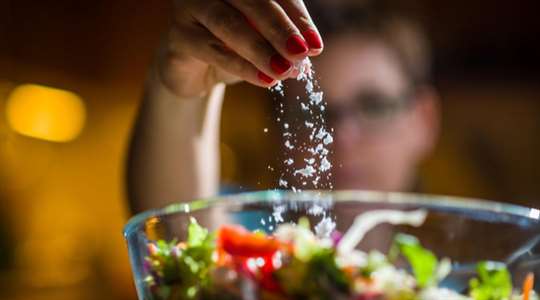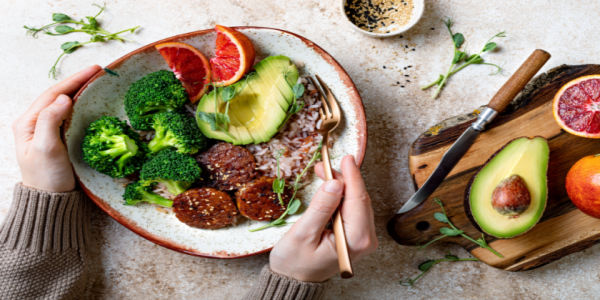
According to the American Heart Association, Americans are only supposed to consume an average of 2,300mg of sodium per day. Instead, we consume a whopping 3,436mg on average.
Why, then, are we so far above our recommended limit? Sometimes, we just can't seem to get enough.
The Satisfaction of Seasoning
“As a society, we have it in our minds that food simply doesn’t taste as good without covering it in salt,” says Christy Shatlock, MS/RD and one of the lead dietitians for BistroMD. “Table salt is one of the biggest culprits of why we consume so much sodium. Just one teaspoon has about 2,325mg, of sodium alone.”
Our desire to season everything with salt is one of the reasons why cases of high blood pressure are at an all-time high. According to the National Heart, Lung and Blood Institute, nearly 1 in 3 U.S. adults are living with this condition.
With so many people addicted to table salt and other unhealthy seasonings, how do we break the habit?
“One of the main things people can do to tame their salt habit is to pay more attention to the foods they eat,” says Christy. “Processed foods such as bread, pizza, cold cuts, and bacon and cheese contain a ton of sodium. In order to avoid taking in too much sodium, pay more attention to labels. Generally, try to avoid food products that contain 200mg or more sodium per serving. This intake is fine as long as you watch that your total daily intake falls under the American Heart Association’s recommended 2,300mg of sodium per day."
Packaging and Labels are Tricky
Just because something is low in sodium, doesn’t mean it’s also low in salt. In fact, one of the reasons why a majority of our population has high blood pressure is our failure to understand how to properly read labels.
“Many people can be fooled by what’s on the label,” says Christy. “Even if something says ‘reduced sodium’ or ‘light in sodium’ that doesn’t mean it’s a good option.”
Here is what the labels really mean:
Sodium-free or salt-free. This product contains less than 5mg of sodium per serving.
Very low sodium. This product contains 35mg of sodium or less.
Reduced or less sodium. This product contains 25% less sodium than the regular version. It’s important that you still check the label to see how much sodium is in each serving.
Lite or light in sodium. The sodium content has been reduced by 50% compared to the regular version. Again, it’s important to check the label to see how much sodium is in each serving.
Unsalted or no salt added. No salt is added during the processing of this product. This doesn’t mean, however, that this product doesn’t contain any sodium. It’s important that you check the ingredients, because some of these may still be high in sodium.
Change Common Habits
If you are fearful that your salt consumption is taking over your diet, it’s important that you change some of your “dining” habits.
“There are simple things you can do that will help curb your appetite for salt,” says Christy. “Simple adjustments can make a big difference.”
For starters, don’t bring the salt shaker to the table. If you are going to season your foods, use healthier alternatives, such as garlic, pepper, chives, ground bay leaves, or basil.
If you like to eat out, limit this to once every week, and pay close attention to the foods on the menu. Not only will you be helping your health, but you’ll save money in the process.
Next Article: Featured Meal







